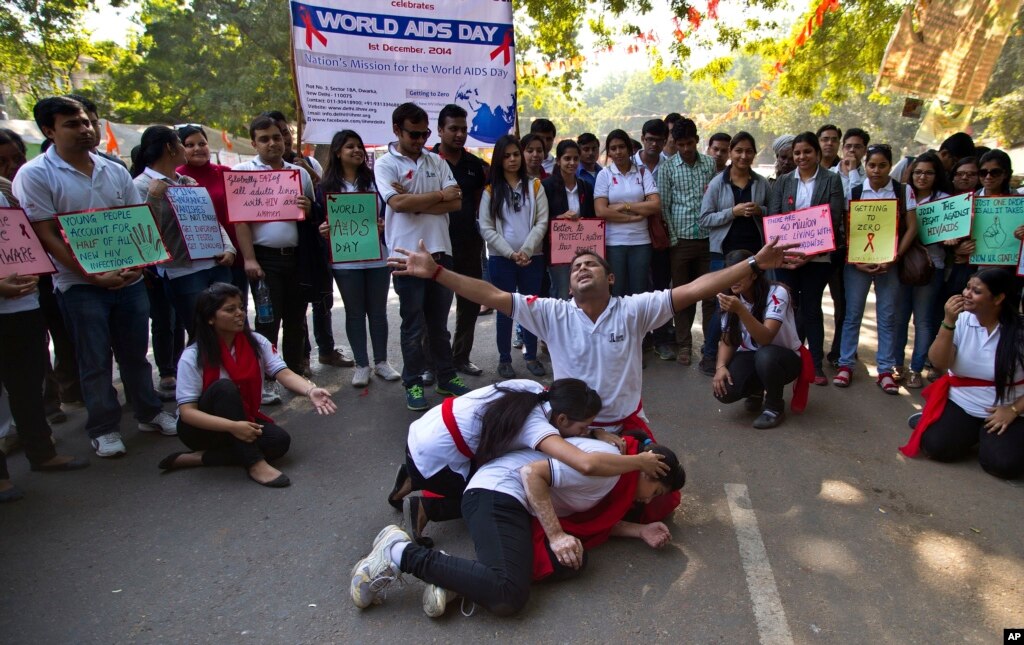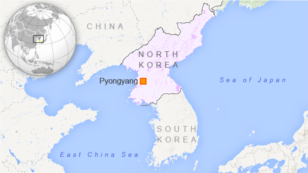
An activist group working to end disease in Africa says the number of new AIDS patients is finally decreasing. But, the group, called the ONE campaign, says that does not mean that AIDS is over.
Erin Hohlfelder is ONE’s director of global health policy. She said the world has made gains in the fight against AIDS, but not all countries are making progress at the same rate. Seventy percent of people with the virus that causes AIDS live in sub-Saharan Africa. Infections have been rising in the Middle East, North Africa, Eastern Europe and Central Asia.
Ms. Hohlfelder said people working to prevent AIDS need at least $3 billion more each year to control the disease. And, she said, those most at risk of getting or having AIDS are hard to reach. These people include those who inject drugs, gay men and sex workers.
U.N. Secretary-General Ban Ki-moon also identified the importance of treating children and young women. The progress the world has made in fighting AIDS has been good, he said. But, he said, the success is fragile.
AIDS treatment
AIDS does not have a cure or a vaccine. But it can be limited for many years with the right combination of drugs.
The United Nations AIDS agency, UNAIDS, says that in 2014 more than 13.5 million people had access to AIDS drugs. That number is a big improvement over 2010, when only about 5 million were getting treatment.
Michel Sidibe is the executive director of UNAIDS. He created a video for World AIDS Day. In it, he asked people to think about how many lost their lives to Ebola.
“Ebola reminds us what we were going through at the beginning of the fighting against HIV,” he said. “People were hiding themselves. They were scared. Stigma, discrimination. We were not having any hope.”
But, Mr. Sidibe said the tragedy of AIDS has turned into hopeful possibility. People have worked together to give millions of patients access to life-saving drugs.
But many people with HIV are not treating the disease. Some experts blame human nature. They say people are afraid to learn whether they have AIDS. Others are tired of getting treatment. And some even believe the disease is not very serious.
Rod McCoy has HIV, the virus that causes AIDS. He works with an organization that provides HIV education and testing.
“One of the things I am concerned about as a health educator is people staying on their meds, but also people who are not infected having the mentality of, 'Oh, people take medication, so if I get infected, I will be fine.'”
Mr. McCoy said AIDS treatment has become so successful, some people no longer worry about getting the disease.
Ending AIDS
UNAIDS has a plan to end AIDS in the next 15 years.
The first goal is known as 90-90-90. By 2020, UNAIDS wants 90% of people with the disease to know they have it; 90% of patients to get treatment; and 90% of those receiving treatment to limit the virus in their bodies.
Research shows that if the virus in the body is limited, a patient is less likely to infect someone else.
Mitchell Warren is the executive director of the HIV advocacy group AVAC. He said UNAID’s 90-90-90 plan is good. But, he said, the goal will be hard to reach. For example, currently fewer than 30 percent of AIDS patients in the United States have limited the infection in their bodies.
To be 100 percent successful, Mr. Warren said, AIDS will not only have to be treated. It will have to be prevented.
I’m Caty Weaver.
Joe DeCapua, Carol Pearson, VOA staff and Reuters news service contributed to this report. Kelly Jean Kelly wrote it for Learning English. Caty Weaver was the editor.
Words in This Story
inject – v. to force a liquid medicine or drug into someone by using a special needle
fragile – adj. easily broken or damaged
vaccine – n. a substance to protect against a disease
stigma – n. a set of negative and often unfair beliefs a society has about something
access – n. a way of getting near, at, or to something or someone
Now it’s your turn to use these Words in This Story. In the comments section, write a sentence using one of these words and we will provide feedback on your use of vocabulary and grammar.





